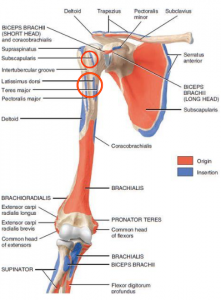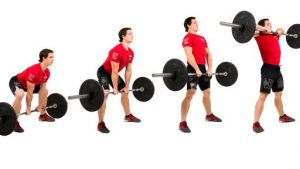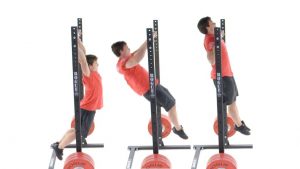What’s That Pain in the Front of My Shoulder?
“What is that pain in the front of my shoulder”
Anterior shoulder pain is a common occurrence, whether you are an overhead athlete, CrossFit athlete, work out with a personal trainer or even work out at home on your own. The pain starts off dull and slowly builds up to the point where you can no longer do a pull up, bring weight overhead or even just move the arm overhead pain free. Initially you may have thought, “it’s not too bad I’ll keep going” and 3 weeks later “oh man, this is getting worse I can’t even reach into the back seat of the car anymore”.
The shoulder is very mobile and there are numerous structures that attach to the front part of the shoulder. This leaves us with an array of things that could be causing that anterior pain. We all know or are told that the biceps or biceps tendon can cause that pain, but in this article we’re going to focus on a few structures that aren’t as frequently considered when talking about anterior shoulder pain.
What I have found is the overuse of the lats, pecs, teres major and subscapularis (one of the rotator cuff muscles that internally rotates the shoulder) can be the culprit of that anterior shoulder pain and are often overlooked in favor of structures like the biceps tendon, or external rotators of the shoulder. In this article we are going to focus on some of the movements in CrossFit and with overhead athletes that might be causing this pain, although these principles can apply across the board, especially if you’re doing similar movements in your workouts!
Check out where these muscles attach:
.
CrossFit Athlete
When we’re talking about CrossFit and Olympic lifting there is a lot of internal rotation and pulling with the lats and internal rotators of the shoulder. These muscles initiate and maintain a lot of tension during the movements required. Pulling from the ground requires the lats and internal rotators to keep the bar close to the body. Also, if you are not as proficient with your hip drive through the lift you will rely more heavily on these shoulder muscles to get the bar up. In this picture, a high pull, the athlete is keeping the bar close to the body throughout the lift and ends in an internally rotated shoulder position. To have a better path of the bar we keep the bar close to us by engaging the lats during deadlifts and when we initiate our Olympic lifts. As we go through the pull we maintain that tension in the lats and internal rotation of the shoulders until we start to get under the bar. 
Pull ups are an important movement in CrossFit as well. Any kind or pull up will engage the lats and the internal rotators, especially if you begin kipping. Check out this picture from the CrossFit Journal. In the middle picture of the pull up you’ll see the powerful pull with the lats to get above the bar, extending and internally rotating the shoulder and creating an increased amount of tension. Now imagine doing these repetitively and putting the lats and other internal rotators under constant tension.

Overhead Athlete
The overhead athlete has been extensively studied. A similar forceful movement into extension and internal rotation is created as the arm comes forward and down during the throwing, hitting, or pulling phases (depending on your sport).

These same muscles: lats, pecs, subscapularis and teres major produce forceful internal rotation and extension to create a powerful throw, serve, spike or stroke. As an athlete rapidly comes through the overhead position they are strongly contracting and putting a lot of tension and stress on the tendons of these muscles.
This overuse, which is often seen with lack of mobility work for the front of the shoulder and lack of posterior shoulder stability work, can lead to constant pull. That persistent pull at the muscle tendons in turn can become pain at the front of the shoulder.
Although I specifically mention the CrossFit and Overhead athlete these structures should’t be overlooked when anyone is dealing with anterior shoulder pain. Most people who work at a desk sit with internally rotated and forward shoulders, which can also cause decreased mobility in the lats and pecs.
What Do I Do?
- Having a balance of strength across the shoulder joint is key. Focus on strengthening your posterior shoulder: Rotator cuff, scapular muscles, upper back to help balance the strength across your shoulder. This will also help create more stability in the shoulder. More specifically take a look at the strength in your low traps, mid traps and your serratus muscles.
- Work on the mobility of the shoulder extensors and internal rotators. Try to open up the front of the shoulder with mobility work for the lats, pec major and minor and your subscapularis.
This is by no means the only cause for anterior shoulder pain. Overhead athletes are sometimes inherently unstable, which can also be the culprit. These are just some structures I wanted to shed light on that tend to get overlooked during an injury and even during rehab! Keep checking back in to learn different exercises and techniques to help with stability of the shoulder and increasing mobility in the muscles mentioned. And if that pain is persistent make sure to seek out your local clinician to help better understand what is going on in your shoulder.




